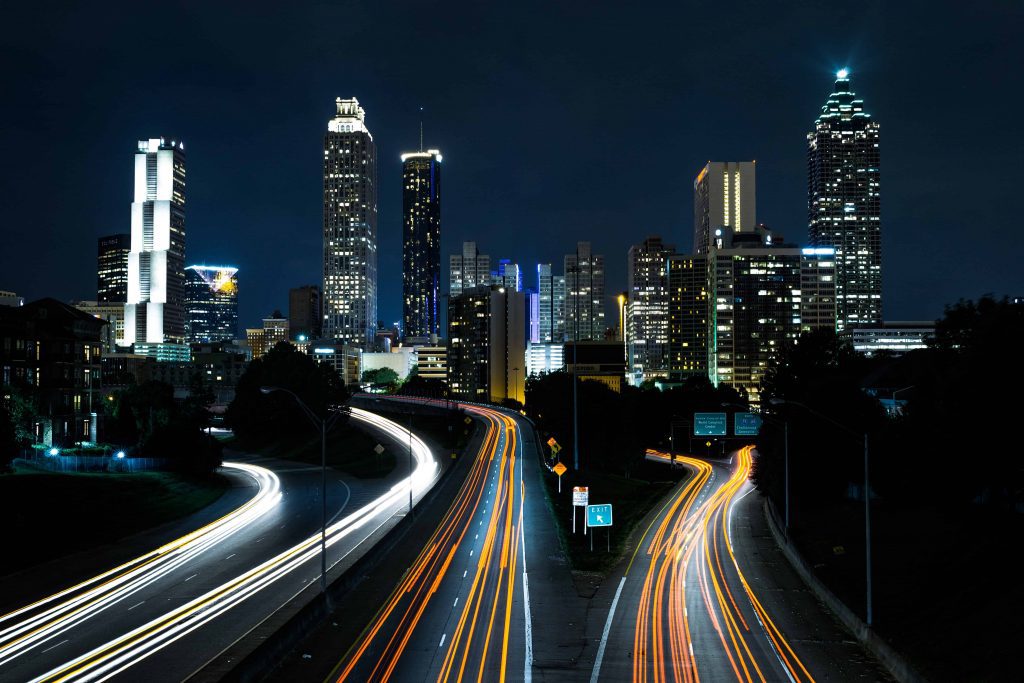
Urbanization is one of the most common characteristics of economic development. As the economy grows gradually, the process of urbanization depends on the shift of the surplus population from rural to urban areas along with the growth of some industrial urban centres.
The pace of urbanization is fast if industrial growth is rapid. The rate of urbanization is gradually declining only when the proportion of the urban population to the total population of the country is becoming too high. Urbanization is closely linked to modernization, industrialization and the sociological process of rationalization. Urbanization is not just a modern phenomenon, but a rapid and historic transformation of human social roots on a global scale, whereby, rural culture is rapidly replaced by predominantly urban culture.
Urbanization takes place with a combination of individual, commercial and government effort; this reduces the time and expense of switching and improves employment, education, housing and transport opportunities. For reasons of wealth and social mobility, many rural people come to the city. But the picture of urbanization is not as glorious as it seems. Modern cities have grown in a haphazard and unplanned way due to rapid industrialization. Cities in developing countries are overcrowded and overcrowded partly as a result of population growth over the decades and partly as a result of migration.
As a result of social and economic pressures, people from backward villages have begun to move to urban centres in search of work, where newly established industries and ancillary activities continue to offer job opportunities to those people who migrate to cities.
Causes of Rapid Urbanisation
Rapid urbanization is taking place in different parts of the country in and around some of the country’s major cities and towns. The growing trend of urbanization is reflected in the increasing concentration of the majority of the urban population in some major cities. The factors that are largely responsible for such rapid urbanization are set out below:
- Natural population increase
Rapid urbanization is taking place due to the high rate of natural population growth. A natural increase occurs when the rate of birth in urban areas exceeds the death rate. The natural growth rate of the urban population is higher than that of the rural population due to the higher net survival rate resulting from improved health and medical facilities. Improvements in health and medical facilities, drinking water supply and sanitation facilities have reduced the incidence of water-borne diseases, communicable diseases, etc.
As a result, the birth rate in urban areas in 1971 was estimated at 30.1 per thousand compared to the death rate of 9.7 per thousand, which then decreased to 24.3 and 7.1 per thousand in 1991. As a result, the natural growth rate is too high due to the large difference between the birth rate and the death rate. Death rates in urban areas have decreased considerably due to improved availability of medical and health services, safe drinking water supply and improved sanitation facilities.
This natural increase in population is largely responsible for phenomenal population growth in urban areas, i.e. 46% in 1971-81 and 36% in 1980-91, compared to 19% and 20% in rural areas of India over the last two decades.
- Migrations
Rural-urban migration is considered to be another important factor responsible for rapid urbanization in India. Rural to urban migration has been the result of many factors during the post-independence period. The creation of many manufacturing and trading activities as a result of industrial development has led to the migration of rural people to urban areas in search of jobs and higher incomes.
After the partition of the country, rural uprooted people began to settle in urban areas in 1947. Poor living conditions and a negligible arrangement with regards to education and health have also attracted a large number of rural people to emigrate and settle in urban areas in search of a good education, health facilities, better living conditions and the security of life.
As a result of heavy public investment in industry and mining, large-scale industrial development and sustainable agricultural development are taking place. As a result of these pull factors; a large number of rural people are migrating to urban areas.
However, there are certain push factors in which a number of rural people are driven out of villages due to economic constraints due to worse economic conditions. Thus, both the pull factor and the push factor are very operational in the current urbanization phase.

- Expansion of trade and industry
In recent years, urbanization has taken place with a growing expansion of industry and trade in a particular state of the region. Growth of an industry with its ancillaries, together with the localization of industry, would always create a favourable situation for the growth of an urban establishment. Similarly, the growth of business and trade, together with the establishment of an active market, always provides adequate support for growing urbanization in those places linked to the development of industry and trade.
- Boundary changes in the cities
With the extension of the boundaries of cities and towns, more and more rural areas are gradually becoming part of urban areas. Although living in these newly extended areas remains rural initially, the inclusion of these areas in these towns and cities will necessarily increase the number of urban populations.
The Trends
In India, there has been an increasing trend towards urbanization since the beginning of this century. Census data on rural-urban composition show a continuous increase in the rate of urbanization in India, particularly in the second half of the present 21st century.
The proportion of the urban population to the total population, which was only 11 per cent in 1911, slowly increased to 11.3 per cent in 1921 and gradually increased to 14 per cent in 1941. With the liberal definition of urban areas adopted in 1951,
The proportion of urban population suddenly rose to 17.6%. However, with a slightly strict definition, the proportion of the urban population increased slightly to 18.3% in 1961. A new definition of an urban unit was adopted in the 1971 census, which was continued in the 1981 census.
Consequences of Rapid Urbanisation
Rapid urbanization is subject to both healthy and unhealthful consequences and aspects.
- Positive Aspect
Rapid industrialization results in the development and establishment of many industrial cities. Together with manufacturing units, ancillaries and the service sector have begun to grow in these urban areas. Second, new and additional employment opportunities are being created in urban areas in the newly expanding manufacturing and service sector. This would result in rural-urban migration and the “industrialization-urbanization process” to be established. Third, urban growth can give rise to external economies in order to reap the benefits of economies of scale for various services and activities. At the end of the day, urbanization results in changes in the attitudes and minds of urban people resulting in the modernization of behaviour and a proper motivation that indirectly helps the country to achieve faster economic development.
- Negative Aspect
Although economic development is very much linked to urbanization, some serious problems have arisen. First, growing urbanization is largely responsible for increasing congestion in urban areas. Too much congestion has resulted in problems such as traffic jams, too much concentration of population, the management of which is gradually becoming very difficult and costly. Second, too much of the population is another unhealthy aspect of urbanization that creates urban chaos related to housing, education, medical facilities, slum growth, unemployment, violence, overcrowding, etc. All of these would lead to deterioration in the quality of human life.
Finally, as a result of urbanization, large-scale migration from rural to urban areas takes place. Such large-scale migration of the active population from rural areas would result in a loss of productivity in rural areas, leading to poor conditions in the village economy. As a result, urbanization beyond a certain point would have unhealthful consequences.
Role of Urbanisation in Economic Development
Urbanization and economic development are closely linked. The economic development of a country indicates an increase in the level of per capita income and long-term living standards-with the increase in employment opportunities for its growing population. With the achievement of economic development and growing industrialization,
The process of urbanization is starting at a rapid pace. Some areas emerge as a large urban centre with large scale industrial and commercial activities. These areas have begun to offer an increasing number of employment opportunities leading to a shift of population from rural areas to urban centres. Thus, the economic development of a country contributes to its urbanization process.

Growing industrialization increases the rate of economic development along with the pace of urbanization in the country. The increase in the rate of economic development raises the level of per capita income and the standard of living of the people, which in turn increases the demand for different goods and services. This increase in aggregate demand expands the production system, leading to large-scale production of different goods and services.
All of these lead to an increase in the pace of urbanization in the country. There is, therefore, a good correlation between the level of per capita income and the rate of urbanization. In India, the correlation coefficient between the proportion of the urban population to the total population and the per capita income level is estimated at 0.5, which is significant. Moreover, economic development paves the way for the growth of cities and urban areas. Consequently, with the increase in the number of cities and towns, the proportion of the urban population to the total population is also increasing.
However, higher levels of urbanization cannot significantly reduce the level of unemployment in India by absorbing an increasing number of surplus labours from rural areas, as the scope for increasing urban employment is also limited. In India, there is an insignificant positive correlation (0.18) between the proportion of the urban population and the rate of daily unemployment. Moreover, there is a slight negative correlation, i.e. 0.22, between the proportion of the urban population and the percentage of the population below the poverty line in India.
Conclusion
Since metro cities or urban areas have reached saturation levels for generating employment and avoiding overcrowding in overcrowded metro-city slums such as Bombay, Calcutta, Delhi and Madras, a strong economic sector in the urban economy is needed. Growth and investment efforts should be directed towards small cities which have so far been neglected in order to strengthen the functional basis of the urban economy. The policy should also be linked to sound urban planning, where urban planning will consist of operational, development and restorative planning. Operational planning should take care of the improvement of urban infrastructure, e.g. roads, transport, etc. Development planning should focus on the development of newly annexed urban areas with sustainability. Restorative planning should aim at restoring the original status of old monuments of historical value. In general, urban planning must target the following components, such as balanced regional and urban planning; Development of a strong economic basis for the urban economy; integration of the rural and urban sectors.
Editor’s Note
The article thoroughly discusses how urbanization has affected our daily lives and left an impact on our country. The article talks about how the urbanization is a phenomenon related to industrialization and modernization and what are the causes of urbanization that is taking place with such a pace. It also talks about factors such as population or migration that acts as pull factors to the modernization. Moreover, this article talks about the positive and negative aspects that one needs to understand to analyze if this phenomenon is significant at present or not. It talks about sustainable economic development, as urbanization goes hand in hand with the economic development of a nation. Lastly, it concludes that urbanization with the balanced planning along with the presence of a firm economic foundation having a combination of both rural and urban sector is feasible given the present situation of our country.